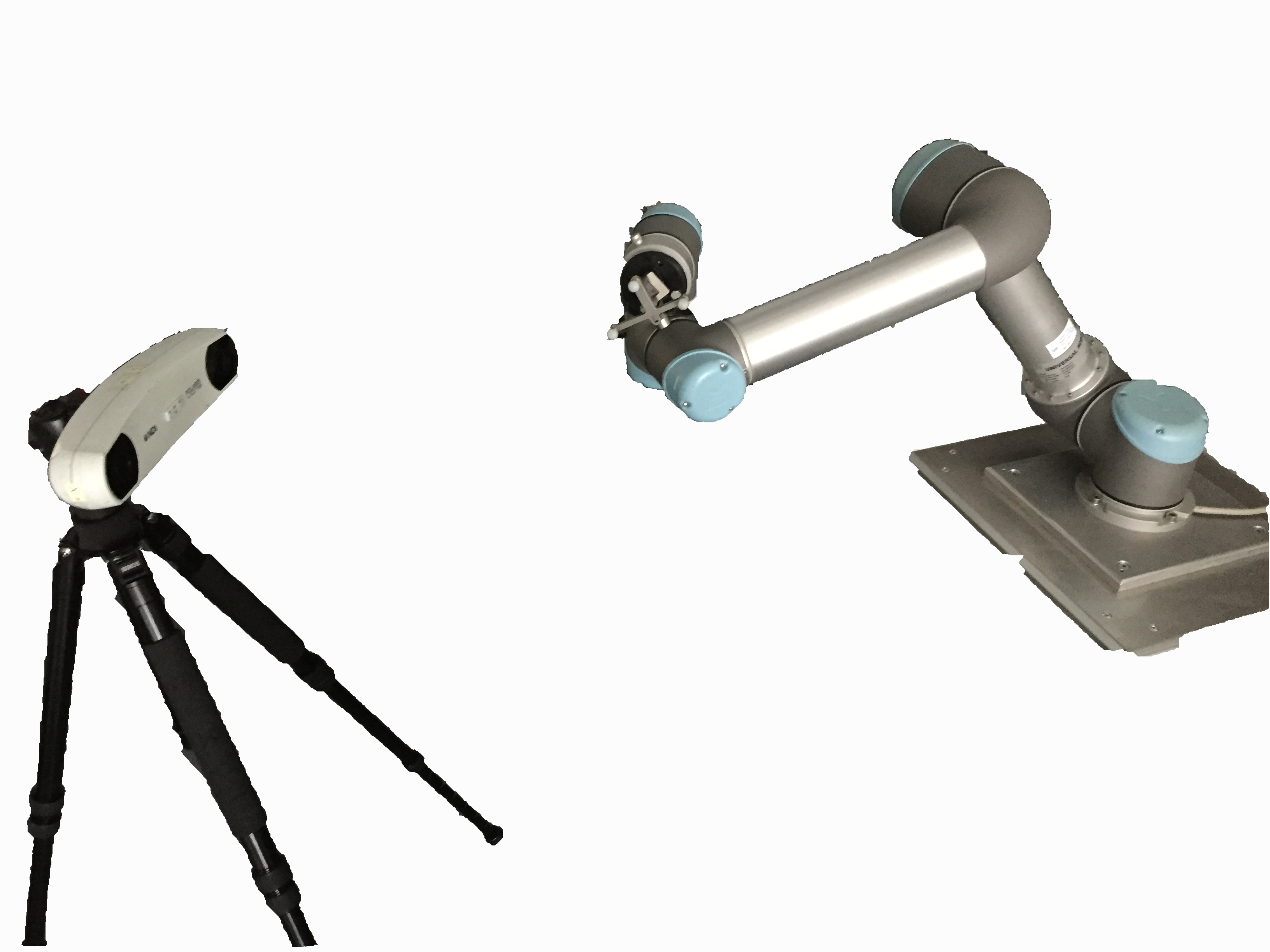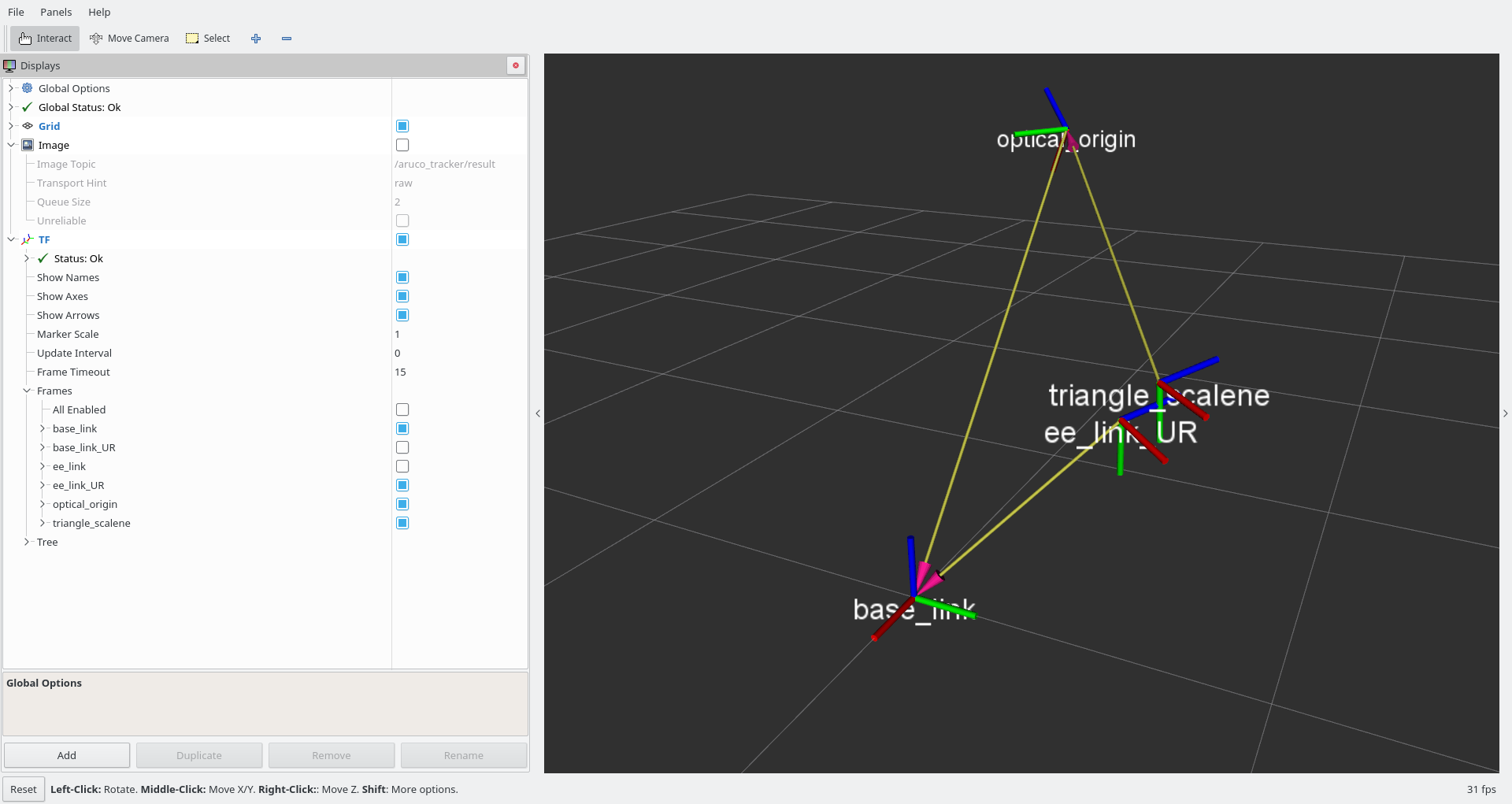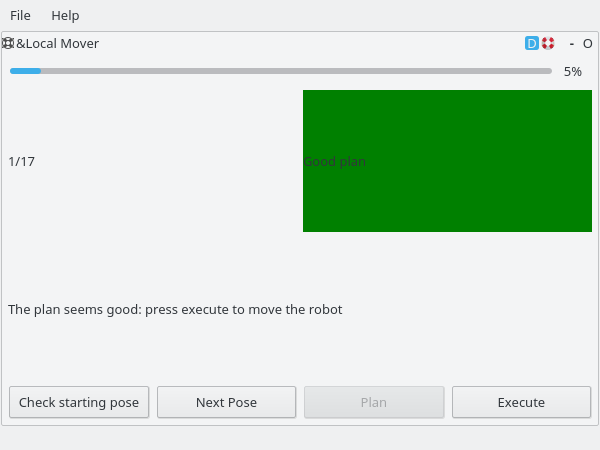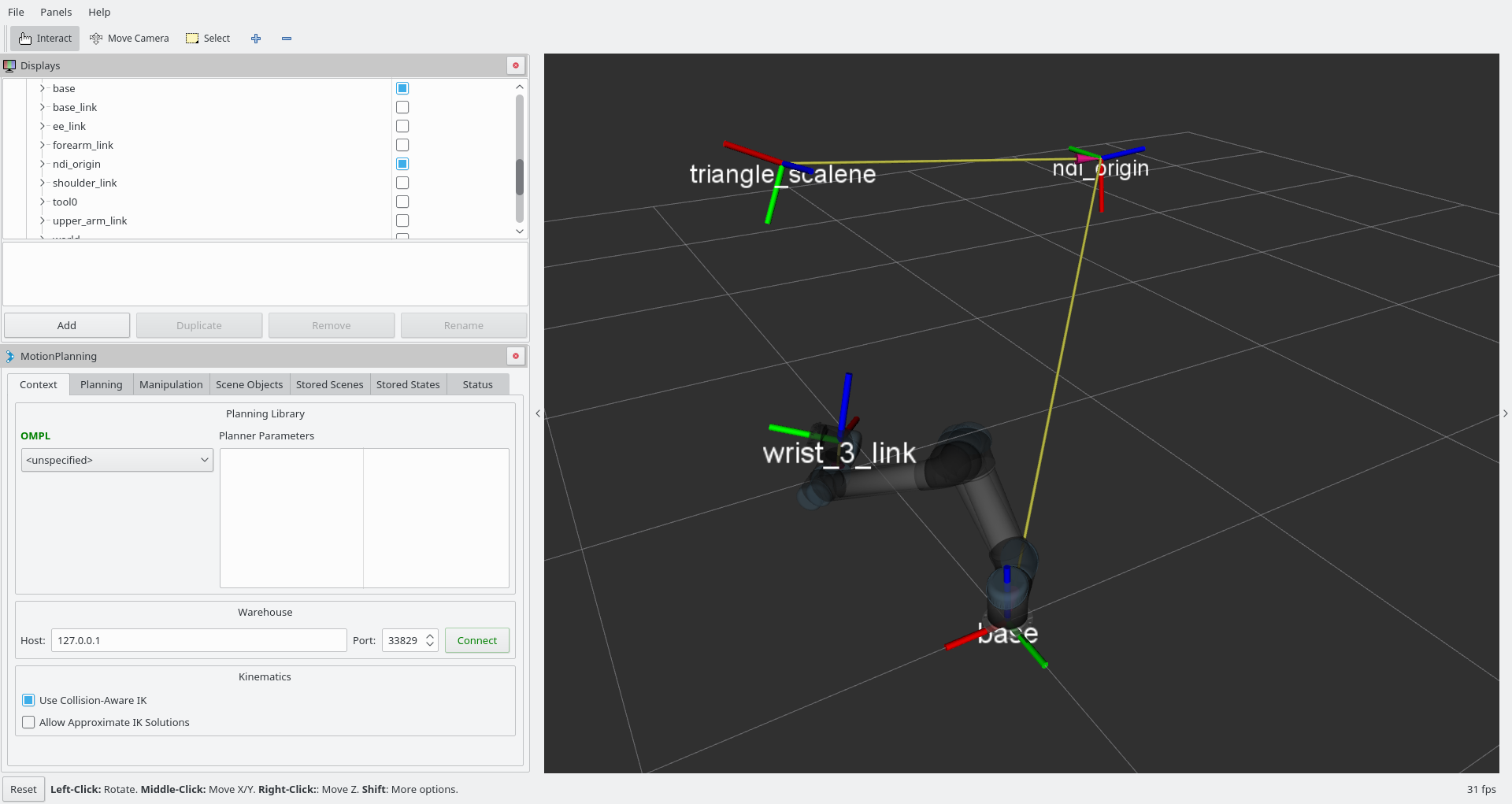This package wraps the hand-eye calibration routine from the ViSP library
(contained in the visp_hand2eye_calibration package) to provide a simple
camera pose estimation solution. Input is expected as transformations published in TF.
Additionally, a method for saving and publishing the resulting calibration is provided. Computing and using a calibration can be achieved by including/starting a single launch file respectively.
An (optional) GUI for the position sampling and automatic robot movement is provided in the rqt_easy_handeye package.
You can try out this software in a simulator, through the easy_handeye_demo package.
If you are unfamiliar with Tsai's hand-eye calibration [1], it can be used in two ways:
- eye-in-hand -- To compute the static transform between the reference frames of a robot's hand effector and that of a tracking system, e.g. the optical frame of an RGB camera used to track AR markers. In this case, the camera is mounted on the end-effector, and you place the visual target so that it is fixed relative to the base of the robot; for example, you can place an AR marker on a table.
- eye-on-base -- To compute the static transform from a robot's base to a tracking system, e.g. the optical frame of a camera standing on a tripod next to the robot. In this case you can attach a marker, e.g. an AR marker, to the end-effector of the robot.
A relevant example of an eye-on-base calibration is finding the position of an RGBD camera with respect to a robot for object collision avoidance, e.g. with MoveIt!: an example launch file is provided to perform this common task between an Universal Robot and a Kinect through aruco. eye-on-hand can be used for vision-guided tasks.
The (arguably) best part is, that you do not have to care about the placement of the auxiliary marker (the one on the table in the eye-in-hand case, or on the robot in the eye-on-base case). The algorithm will "erase" that transformation out, and only return the transformation you are interested in.
| eye-on-base | eye-on-hand |
|---|---|
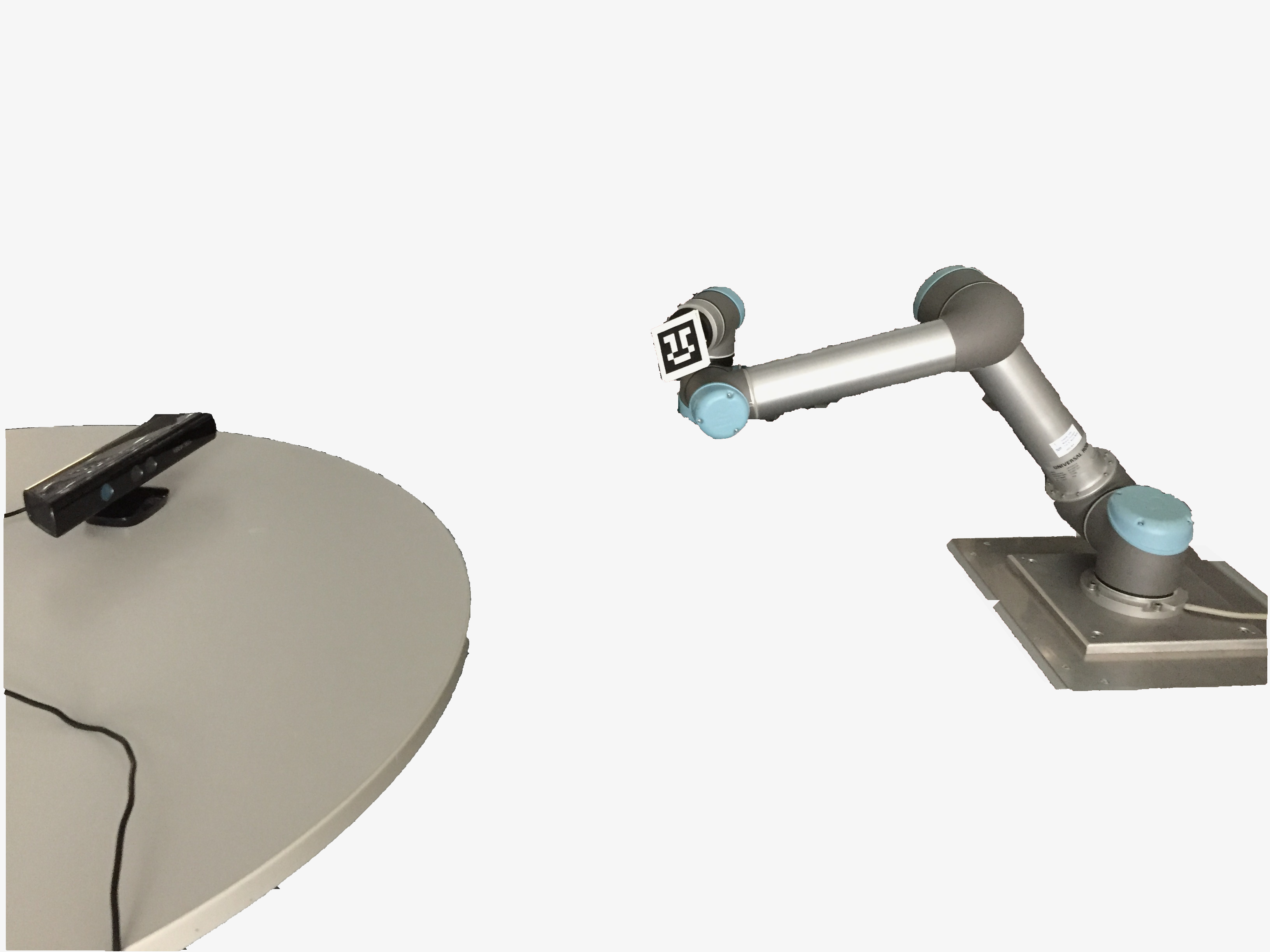 |
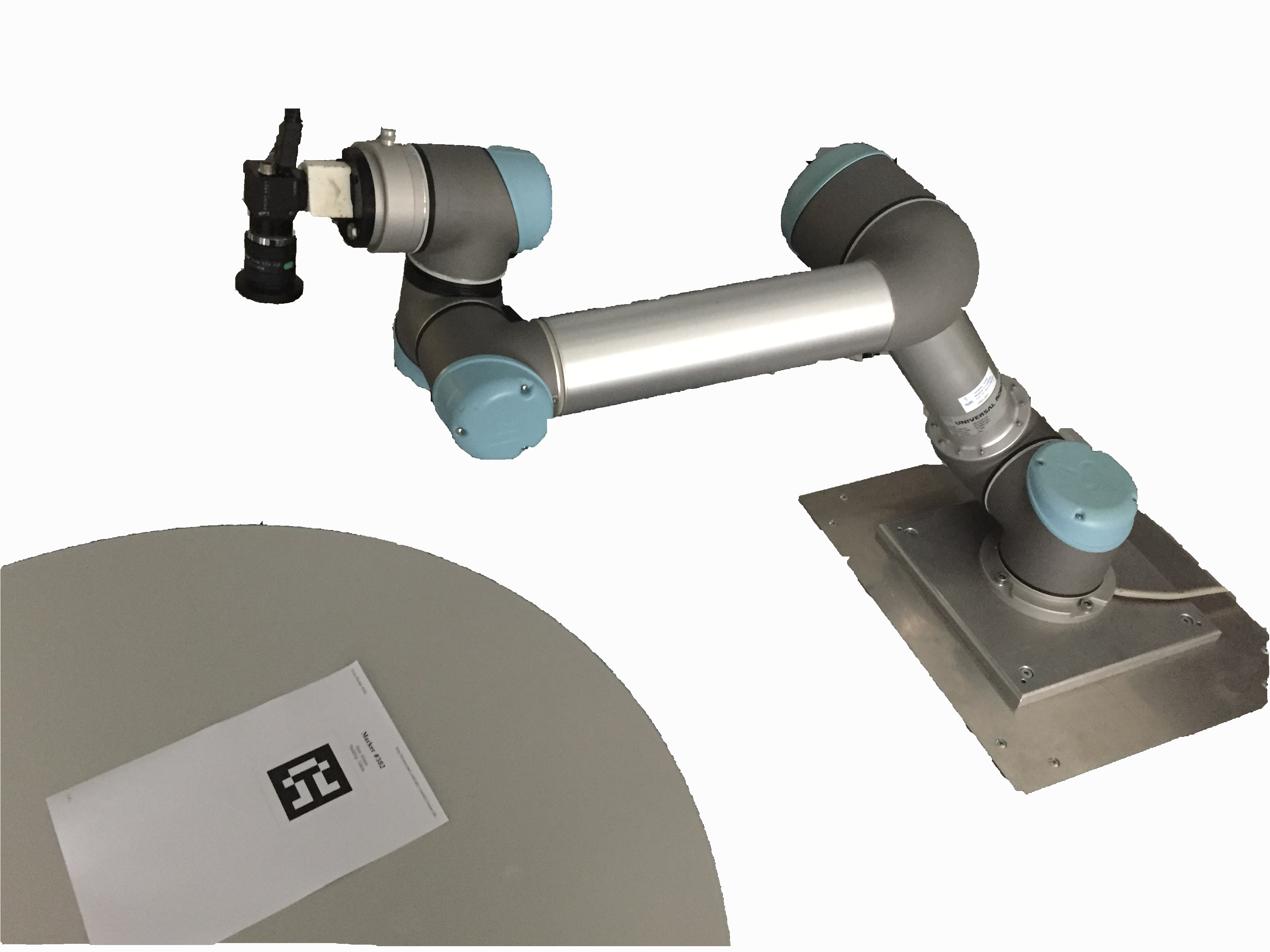 |
- clone this repository into your catkin workspace:
cd ~/catkin_ws/src # replace with path to your workspace
git clone https://github.com/IFL-CAMP/easy_handeye
- fix for melodic: at the time of writing, vision_visp has not been yet released into ROS melodic. In order to satisfy this dependency, you can build it from source
cd src
git clone https://github.com/lagadic/vision_visp.git
sudo apt install libvisp-dev
- satisfy dependencies
cd .. # now we are inside ~/catkin_ws
rosdep install -iyr --from-paths src
- build
catkin build
Two launch files, one for computing and one for publishing the calibration respectively, are provided to be included in your own. The default arguments should be overridden to specify the correct tf reference frames, and to avoid conflicts when using multiple calibrations at once.
For both use cases, you can either launch the calibrate.launch
launch file, or you can include it in another launchfile as shown below. Either
way, the launch file will bring up the visp_hand2eye_calibration solver, along with an
integration script. By default, the integration script will interactively ask you
to accept or discard each sample. At the end, the parameters will be saved in a yaml file.
<launch>
<include file="$(find easy_handeye)/launch/calibrate.launch">
<arg name="eye_on_hand" value="true"/>
<arg name="namespace" value="my_eih_calib"/>
<arg name="robot_base_frame" value="/base_link"/>
<arg name="robot_effector_frame" value="/ee_link"/>
<arg name="tracking_base_frame" value="/optical_origin"/>
<arg name="tracking_marker_frame" value="/optical_target"/>
</include>
</launch><launch>
<include file="$(find easy_handeye)/launch/calibrate.launch">
<arg name="eye_on_hand" value="false"/>
<arg name="namespace" value="my_eob_calib"/>
<arg name="robot_base_frame" value="/base_link"/>
<arg name="robot_effector_frame" value="/ee_link"/>
<arg name="tracking_base_frame" value="/optical_origin"/>
<arg name="tracking_marker_frame" value="/optical_target"/>
</include>
</launch>A GUI for automatic robot movement is provided by the rqt_easy_handeye package. Please refer to its documentation.
The following tips are given in [1], paragraph 1.3.2.
- Maximize rotation between poses.
- Minimize the distance from the target to the camera of the tracking system.
- Minimize the translation between poses.
- Use redundant poses.
- Calibrate the camera intrinsics if necessary / applicable.
- Calibrate the robot if necessary / applicable.
The publish.launch starts a node that publishes the transformation found during calibration in tf.
The parameters are automatically loaded from the yaml file, according to the specified namespace.
For convenience, you can include this file within your own launch script. The following example publishes
two different calibrations concurrently:
<launch>
<!-- your nodes -->
<include file="$(find easy_handeye)/launch/publish.launch">
<arg name="namespace" value="my_eob_calib"/>
</include>
<include file="$(find easy_handeye)/launch/publish.launch">
<arg name="namespace" value="my_eih_calib"/>
</include>
</launch>You can have any number of calibrations at once (provided you specify distinct namespaces). If you perform again any calibration, you do not need to do anything: the next time you start the system, the publisher will automatically fetch the latest information. You can also manually restart the publisher nodes, if you don't want to shut down the whole system
How can I ...
Calibrate an RGBD camera (e.g. Kinect, Xtion, ...) with a robot for automatic object collision avoidance with MoveIt! ?
This is a perfect example of an eye-on-base calibration. You can take a look at this example launch file written for an UR5 and a Kinect via aruco_ros.
You can pass the argument freehand_robot_movement:=true to calibrate.launch.
You can just override the namespace argument of calibrate.launch to be always different, such that they will never collide. Using the same namespace as argument to multiple inclusions of publish.launch will allow you to publish each calibration in tf.
You could perform the eye-on-base calibration against the same tracking system, and concatenate the results.
You could perform the eye-on-base calibration against the same robot, and concatenate the results. This will work also if the tracking systems are completely different and do not use the same markers.
[1] Tsai, Roger Y., and Reimar K. Lenz. "A new technique for fully autonomous and efficient 3D robotics hand/eye calibration." Robotics and Automation, IEEE Transactions on 5.3 (1989): 345-358.
